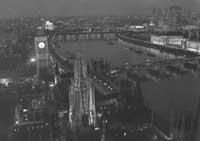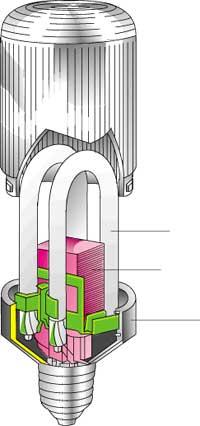Electric lamp
The electric lamp is an effective tool for lighting in the dark. We have already shown that. But in prehistory they also used artificial light and of course they did not know the electric lamp. Until knowing the electricity and mastering its operation, this energy source was not used to generate light. Our ancestors, however, did not need many people to have light in the caves and shacks. The stones or shells made a hole where the fat was put. The vegetable fiber or hair, which was attached to the fat, was burned, obtaining a light of several hours.

Over the years and centuries, the materials changed and improved, but not so much the way they illuminated. The stone and shells were abandoned and new supports such as brass, copper and gold appeared. New fuels were also used, the best known being oil and wax. These fuels have been seen in homes until a few years ago. Although in all homes there were light bulbs, they did not produce enough light and oil lamps, candles and oil lamps were used.
XIX. Until the 20th century the houses and workplaces were lit with the lamps mentioned above. XIX. In the 18th century, gases were replaced by oil, oil and wax. At that time they used gas to produce light, but it was not the most appropriate method. The Industrial Revolution was advancing and the cities were born and spread one after another, in which numerous homes and factories were concentrated. In this new situation light was essential. The gas made light weak and intermittent and the risk of a leak was enormous.
The desire to obtain a good quality artificial light was not extinguished and the next attempt was made with another type of lamp: carbon arc. This lamp was especially important, as it was the first time electricity was used to generate light. Compared to gas, it made more light and was soon used in lighthouses, factories and public places. For the homes, instead, it was very noisy and the smoke, in addition to dirty the banks, caused breathing problems in closed places.
In this journey of artificial light, let's pause and differentiate the ways of generating light in two groups. The first group is that of some lamps already mentioned, such as the oil lamp and the oil lamp. The characteristic of this group is heat generation. Something (liquid or solid) is heated until it becomes incandescent and then the light shines. The flame of the oil lamp or candle contains carbon particles when it rises and is the cause of light.
We can say that the bulbs we usually use in homes produce the same light. Of course there are differences, the bulb needs electricity to illuminate and the heat generated by the current does not exhaust the wire (as with oil or wax).
Great discovery, bulb
We mentioned the bulbs that we hung at home from the ceiling. This discovery has been very important in advanced societies.

The two best-known men who tried to light the bulb are American Thomas Alva Edison and English Swan. Undoubtedly, Edison is the most famous of the two and he has been considered the inventor of the bulb. When the American said he was going to get artificial light through the electric current, people believed to the point that the actions of the lighting gas fell on the New York and London Stock Exchanges.
Since he expressed his intention until the bulb made the light it took a long time. The heat produced by the current immediately burned the platinum thread. On the day he tried with carbon yarn, Edison's headaches ended. The first bulb did not turn off the light for forty-five hours.
After the success, Edison and Swan opened a power distribution business and began selling bulbs. In 1882 2,323 light bulbs were sold in the US, and in 1885 60,000 light bulbs were clear in their homes.
The light bulbs hanging from the ceiling of our houses are not raised by the carbon thread, but by the wolfram thread. The electric current passes through the wire that is rolled up and the tungsten heats up, reaching a temperature of 2,500 °C and becoming incandescent. That incandescent makes light. This metal was selected because with this temperature can be kept without burning tungsten. However, in contact with atmospheric oxygen would burn, so inside the glass bulb there is an inert gas at low pressure, usually argon.
Invisible fluorescent rays
We have already mentioned that there are two main ways to make light. One of those we just described, both by candles, oil lamps and light bulbs. The other method is to pass the electric current through a gas or steam. Small particles inside atoms, electrons, release energy like bright rays. The best known and used example of this form of light generation is the fluorescent lamp.
The fluorescent lamp is a tube. At the two ends of the tube there are electrodes that heat up when passing the electric current. Thanks to this heat, electrons are released into the center of the tube. In the case of mercury vapor lamp, released electrons collide with mercury atoms and as a result of collision, atoms send ultraviolet light rays. But it is not the purple light that we see, because the ultraviolet rays are invisible. Invisible rays collide with the bottom of the tube.
The lower part has phosphorus coating and when attacked by rays activates the electrons of phosphorus atoms. As a result of this activation, they emit white light, the very light we see. Ultraviolet light (invisible to us) becomes white light. This evolution is known as fluorescence.
Buletina
Bidali zure helbide elektronikoa eta jaso asteroko buletina zure sarrera-ontzian











